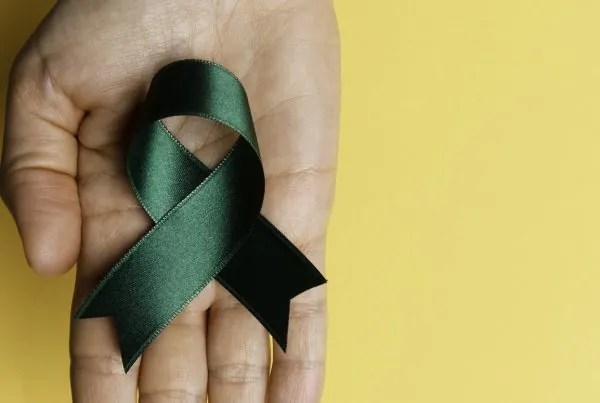As discussions surrounding discrimination reach peak relevancy this Pride Month, it’s important to be aware of the inequality that has been a primary issue for teens and young adults in the LGBTQ+ community for decades, and continues to be a pressing issue over 50 years after the Stonewall riots.
LGBTQ+ youth have been on the receiving end of underreported suicides and fatal harassment, denial of medical care, discrimination at school and in the workplace, and vicious bullying for years and years. Organizations like the American Civil Liberties Union and Lamdba Legal have made a huge impact on helping non-LGBTQ+ Americans recognize the legitimacy of our LGBTQ+ youth and shine a light on these issues.
Yet we are far from reaching a point of equality and understanding. Just a few days ago, the current administration reversed key health protections for transgender people. A recent National Survey on LGBTQ Youth Mental Health in 2021 found 42% of LGBTQ youth seriously considered attempting suicide. Higher rates of anxiety, depression, and suicidal ideation continue to be linked to rejection by family members, negative bias, discrimination, and serious barriers to access for mental and physical healthcare.
As educators, parents, friends, and allies, our role in helping our loved ones in the LGBTQ+ community is and always has been vital. Here are some of the ways you can continue to support the mental health condition of LGBTQ+ teens and loved ones.
Supporting and Affirming LGBTQ+ Youth
GLAAD’s annual survey on acceptance shows the number of Americans between ages 18 and 34 who are comfortable around LGBTQ+ individuals has decreased from 63 percent in 2016 and 53 percent in 2017 to 45 percent in 2018. Meanwhile, the number of young people who feel uncomfortable with the idea of having an LGBTQ+ relative has increased (from 29 percent to 36 percent), and more feel uncomfortable with the idea that their child had a school lesson on LGBTQ+ history (39 percent) than the previous year (30 percent).
The slow erosion of tolerance, particularly among young people, is surprising – and some speculate it might be tied to the “newness” of LGBTQ+ identities for teens and young people who had not previously been aware of non-binary gender identities and sexual orientations other than homosexuality and heterosexuality. Nevertheless, it hints at the need for more information and understanding on the topic of LGBTQ+ identity, particularly for teens and adults who feel confused by the concepts of distinguishing between biological sex, gender, and orientation.
Spreading LGBTQ+ Youth Mental Health Awareness
Aside from a rise in hate and discrimination, especially against trans people of color, another startling issue demanding attention is the lack of access to critical care for LGBTQ+ youth, as well as a lack of LGBTQ+ sex education, and general health care disparities among lesbian, gay, bisexual, and transgender youth. A report published by Human Rights Watch details how members of the LGBTQ+ community face discrimination leading to delays in critical care, leaving LGBTQ+ youth more vulnerable to mental health issues such as depression and substance abuse, as well as physical conditions like cancer and chronic pain.
The Affordable Care Act had previously prohibited discrimination in healthcare on the basis of sexual orientation and gender identity, yet even then issues of discrimination continued to occur. Prior to roll backs issued by the current administration that further puts LGBTQ+ youth at risk, surveys from 2017 already showed discrimination actively discouraged teens and adults in the LGBTQ+ community from seeking care when they needed it, and LGBTQ+ community members often had trouble finding alternatives after being turned away.
-
- 9 percent of LGBTQ+ respondents reported that their healthcare provider used abusive language when treating them
- 8 percent reported refusal of service
- 7 percent reported unwanted physical contact (including sexual assault and fondling)
Among transgender respondents, the discrimination was even worse. 29 percent said they experienced refusal of service, 29 percent reported unwanted physical contact, and 21 percent reported abusive language. Nearly one in four transgender individuals refused to seek out healthcare out of fear of discrimination in 2015. Spreading awareness on these issues and highlighting the need to fight against discrimination in healthcare, both mental and physical, is critical if we wish to reduce the rate at which LGBTQ+ youth experience negative healthcare outcomes and complications related to poor healthcare, or none at all.
Speaking Out Against LGBTQ+ Discrimination and Bullying at School
A report on the effects of school bullying on LGBTQ+ youth, 85 percent reported being verbally harassed for their sexual orientation, and 44 percent were physically harassed for their sexual orientation. Compared to peers who reported low levels of school victimization, a survey of 245 LGBTQ+ individuals found higher levels of school victimization led to:
-
- 2.6 times greater likelihood of depression
- 5.6 times greater likelihood of attempted suicide
- 2 times greater likelihood of an STD diagnosis
Across the board, higher levels of bullying and victimization led to significantly higher instances of depression, suicidal thoughts and attempts, and STD diagnoses later in life. If you have noticed that your loved one has experienced discrimination or bullying at school because of their nonconforming gender identity or sexual orientation, bring it up with the teachers and those in charge.
If the school does not already have a policy on anti-LGBTQ+ bullying and discrimination, petition for them to make one. And if the school does not have a student-run Genders & Sexualities Alliance (GSA), consider looking into organizing one, as GSAs can play a critical role in disseminating information and helping middle and high school students educate themselves on the topics of gender identity, sexual orientation, bullying, and suicide prevention.
Helping LGBTQ+ Loved Ones Seek Access to Mental and Physical Healthcare
Ultimately, public health recourse for teens experiencing victimization because of their LGBTQ+ identity is limited. It is important to encourage them to seek outside help for mental illness treatment and support, via LGBTQ+ mental health services, providers and therapists. Advocate for your loved one’s access to mental and physical healthcare and seek out local resources to help you identify LGBTQ+ friendly therapists, and specialists.
The best way to be an ally to a loved one is to help defend their basic human rights to exist, express themselves, and seek care and support from you and others. Many teens and youth are confused about who they are and lack the access to information they might be able to use to better understand themselves, which is why helping them seek information out can be vital as well. By expressing your support for them, you also empower them to find out who they are without judgment and bias.







